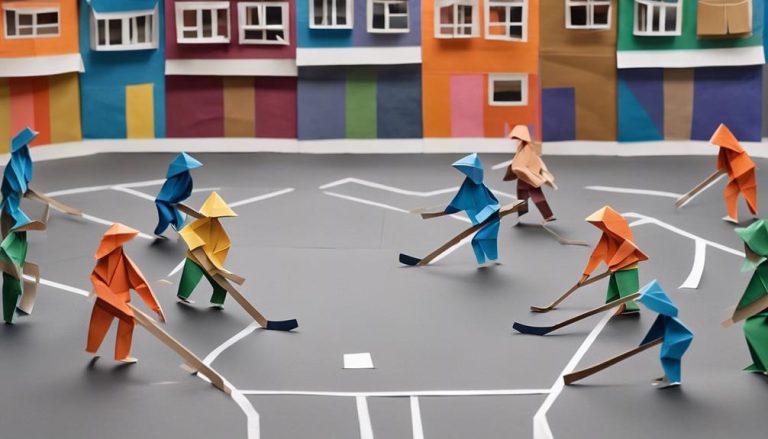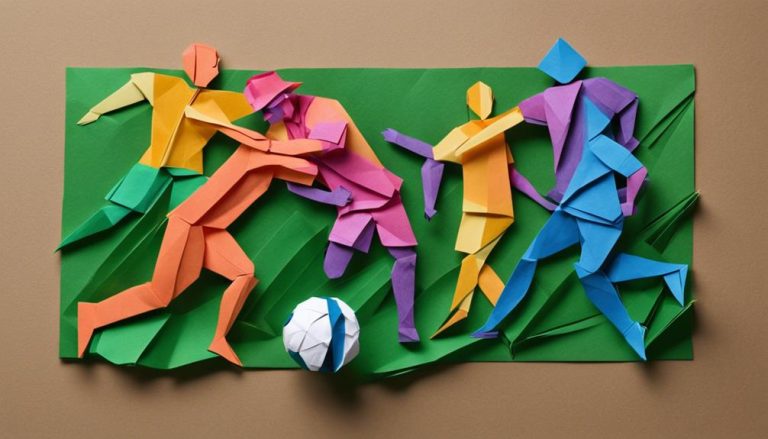General Rules of Para Climbing
When it comes to para climbing, following the rules is essential. Eligibility Requirements guarantee fair participation, Equipment Regulations assure safety, and Classification Criteria determine competitive categories. But what about the finer details that make a climber successful in this unique sport? Stay tuned to discover the ins and outs of Competition Format, Safety Protocols, and Code of Conduct that shape the para climbing experience.
Eligibility Requirements
To be eligible for para climbing competitions, athletes must meet specific criteria set forth by the International Federation of Sport Climbing. These criteria guarantee that individuals with physical limitations are provided with a significant and safe environment to compete in. Athletes must provide thorough medical documentation detailing their specific condition and how it affects their climbing abilities. This documentation is vital in determining the appropriate category for the athlete and making sure that they receive the necessary accommodations.
Physical limitations vary greatly among para climbers, ranging from mobility impairments to visual or neurological conditions. The medical documentation plays a critical role in evaluating these limitations and categorizing athletes correctly. It helps the competition organizers understand the unique challenges each athlete faces and allows for tailored support to be provided.
The International Federation of Sport Climbing has established clear guidelines regarding the type of medical documentation required for para climbers. This ensures consistency and fairness across all competitions. By adhering to these guidelines, the federation upholds the principles of inclusivity and equal opportunity for all athletes.
Equipment Regulations
When it comes to Para Climbing rules, understanding the Equipment Regulations is important. You must pay attention to the Required Gear Specifications, Safety Equipment Guidelines, and the Inspection and Maintenance processes. Ensuring compliance with these points is essential for a safe and successful climbing experience.
Required Gear Specifications
Proper adherence to the specified gear requirements is essential for para climbers aiming to compete at the highest level. Gear sizing plays a critical role in ensuring comfort and safety during climbs. It is imperative to select gear that fits well, taking into account any unique physical characteristics to maximize performance. Climbing techniques also influence gear specifications, with different styles requiring specific equipment features. Understanding the correlation between gear sizing and climbing techniques is fundamental for para climbers seeking to excel in their sport. By meticulously following the guidelines for required gear specifications, athletes can optimize their performance and enhance their overall climbing experience. Remember, the right gear tailored to individual needs can make a significant difference in achieving success on the climbing wall.
Safety Equipment Guidelines
Adhering to the safety equipment guidelines is paramount for para climbers competing at elite levels, ensuring utmost protection and readiness during climbs. To guarantee safety and best performance, consider the following:
- Equipment maintenance: Regularly inspect all gear for signs of wear or damage.
- Safety precautions: Always double-check harness buckles and knots before climbing.
- Equipment quality: Invest in high-quality gear from reputable brands for increased reliability.
- Proper fit: Make sure all safety equipment fits properly to maximize effectiveness and comfort.
Following these guidelines meticulously can greatly reduce the risk of accidents and enhance your climbing experience. Remember, safety should always be the top priority in para climbing.
Inspection and Maintenance
Regularly inspecting and maintaining your climbing equipment is essential to guarantee maximum safety and performance in para climbing competitions. Routine checks should be conducted before each climb to make sure that all gear is in proper working condition. Inspect ropes for signs of wear, such as fraying or cuts, and check harnesses and carabiners for any damage. Proper care and maintenance of your equipment not only enhance safety but also prolong the lifespan of your gear. Make sure to clean your equipment regularly, following manufacturer guidelines, and store it in a cool, dry place away from direct sunlight. By prioritizing routine checks and proper care, you can climb with confidence knowing that your equipment is reliable and ready for the challenge ahead.
Classification Criteria
As you explore the Classification Criteria within the world of para climbing, you will encounter an array of essential points. These points encompass a detailed Classification Criteria Overview, detailing the intricate Eligibility Requirements and the meticulous Assessment Process. Understanding these points is important for participants, officials, and all stakeholders involved in the para climbing community.
Classification Criteria Overview
The criteria for classification in para climbing provide a structured framework to assess athletes' abilities and determine their appropriate category for competition. When considering the Classification Criteria Overview, keep in mind the following key points:
- Functional Ability Assessment: Athletes are evaluated based on their physical, sensory, and cognitive impairments to determine the level of assistance needed during climbing.
- Visual Impairment Criteria: Specific guidelines are in place for athletes with visual impairments, guaranteeing fairness and safety during competitions.
- Physical Impairment Classification: Athletes are categorized based on the type and extent of their physical impairments to guarantee balanced competition.
- Review Process: Regular reviews are conducted to reassess athletes' classifications and make any necessary adjustments based on their evolving abilities.
Understanding these criteria is essential for both athletes and officials to guarantee fair competition in para climbing.
Eligibility Requirements
To determine an athlete's eligibility for para climbing competitions, a thorough assessment of their impairments and abilities is conducted according to specific classification criteria. Medical clearance is essential to make sure the safety of participants. Additionally, age restrictions may apply to certain categories to maintain fair competition standards. Training qualifications and experience level are also vital factors in determining eligibility. Athletes must possess the necessary skills and expertise to compete at the para climbing level they are entering. These requirements help make sure that participants are adequately prepared for the challenges they will face during the competition. By adhering to these eligibility criteria, para climbing competitions can maintain a high level of competition while also prioritizing the safety and well-being of all athletes.
Assessment Process
When evaluating athletes for para climbing competitions, a detailed assessment based on specific classification criteria is conducted to determine their eligibility. This process involves analyzing various factors to guarantee fair competition and appropriate categorization. The assessment considers the athlete's physical impairments, climbing abilities, and overall performance potential. Here are some key aspects that are taken into account during the assessment:
- Training Techniques: Evaluation of the training methods employed by the athlete to enhance their climbing skills.
- Skill Development: Assessment of the athlete's progress in developing climbing techniques and overcoming challenges.
- Coaching Strategies: Analysis of the coaching techniques utilized to support the athlete's growth and performance.
- Performance Evaluation: Detailed review of the athlete's past performances in para climbing events to determine their classification.
Competition Format
Exploring the Para Climbing Rules' Competition Format reveals a structured system designed to showcase athletes' diverse abilities and skills. The scoring system and judge criteria play pivotal roles in evaluating competitors' performances accurately. In para climbing competitions, each route is assigned a point value based on its difficulty level. Climbers aim to accumulate the highest score possible by reaching as high as they can on the route within a specified time frame.
The scoring system takes into account various factors, including the type of climbing (such as lead or boulder), the athlete's category, and the specific route's complexity. Judges assess climbers based on their technique, problem-solving skills, and overall performance. This guarantees a fair evaluation that considers the unique challenges each athlete faces due to their impairment.
Moreover, competitions often feature multiple rounds where climbers attempt different routes to showcase their adaptability and versatility. The emphasis is not solely on reaching the top but on overcoming obstacles in creative ways. This format encourages athletes to push their limits and inspires innovation in problem-solving strategies.
Safety Protocols
Implementing stringent safety protocols is essential in para climbing competitions to confirm the well-being of athletes and maintain the integrity of the sport. To guarantee a safe environment for para climbers, the following safety protocols must be strictly adhered to:
- Emergency Procedures: Establish clear emergency procedures that include protocols for injuries, medical emergencies, and evacuations. All staff, volunteers, and participants should be well-versed in these procedures to guarantee swift and efficient responses in case of emergencies.
- Training Protocols: Develop thorough training protocols for all individuals involved in the competition, including climbers, belayers, route setters, and judges. Proper training ensures that everyone understands their roles, responsibilities, and safety measures to mitigate risks effectively.
- Risk Management: Conduct detailed risk assessments of the climbing area, equipment, and potential hazards. Implement risk management strategies to minimize the possibility of accidents and injuries during the competition.
- Communication Strategies: Establish effective communication channels between organizers, participants, and medical personnel. Clear communication is vital for disseminating safety information, updating on any changes or emergencies, and ensuring a coordinated response in challenging situations.
Code of Conduct
To uphold professionalism and guarantee a respectful and safe environment for all participants, adherence to a thorough Code of Conduct is imperative in para climbing competitions. Respectful behavior is a cornerstone of this code, encompassing how climbers interact with each other, officials, and spectators. It involves treating everyone with dignity and consideration, regardless of differences in abilities or backgrounds. Upholding respectful behavior not only fosters a positive atmosphere but also promotes inclusivity within the para climbing community.
Sportsmanship is another vital aspect of the Code of Conduct in para climbing. Climbers are expected to exhibit fair play, honesty, and integrity throughout the competition. This includes accepting both victories and defeats graciously, respecting the rules of the sport, and displaying humility in achievements. Upholding sportsmanship is essential for maintaining the competitive spirit of para climbing while also prioritizing camaraderie and mutual respect among participants.
Ethics play a crucial role in the Code of Conduct as well. Climbers are expected to compete honestly, without cheating or engaging in any form of misconduct that could compromise the integrity of the sport. Upholding ethical standards ensures a level playing field for all participants and upholds the values of para climbing as a sport that celebrates determination, skill, and fair competition. By adhering to the Code of Conduct, climbers contribute to creating a supportive and encouraging environment where everyone can thrive and enjoy the sport to its fullest potential.
Frequently Asked Questions
Can Para Climbers Receive Financial Support or Sponsorship for Competing in Para Climbing Competitions?
You can seek funding opportunities and sponsorship possibilities as a para climber to receive financial support and competition incentives. Connecting with organizations, companies, and sports associations can help you secure necessary resources for your climbing endeavors.
Are There Any Specific Training Programs or Resources Available for Para Climbers Looking to Improve Their Skills?
Begin on a journey of growth and mastery with skill-building workshops, coaching programs, and performance clinics tailored for para climbers. Access training resources to elevate your abilities and conquer new heights.
What Is the Process for Filing a Complaint or Dispute Regarding a Classification Decision in Para Climbing?
If you disagree with a classification decision in para climbing, the process for filing a complaint involves classification appeals. Understanding dispute resolution procedures is essential. Seek guidance from relevant authorities to navigate through the steps effectively.
Are There Any Opportunities for Para Climbers to Participate in International Competitions or Events?
In the domain of international opportunities, para climbers can engage in various events, fostering inclusivity and competition. With over 70 countries participating in the IFSC Paraclimbing World Championships, the global stage beckons for para athletes.
How Can Para Climbers Get Involved in Advocacy or Outreach Efforts to Promote Para Climbing Within Their Communities?
To get involved in advocacy and outreach for para climbing in your community, consider volunteering, joining awareness campaigns, or participating in mentorship programs. These initiatives help promote inclusivity and support for para climbers.






